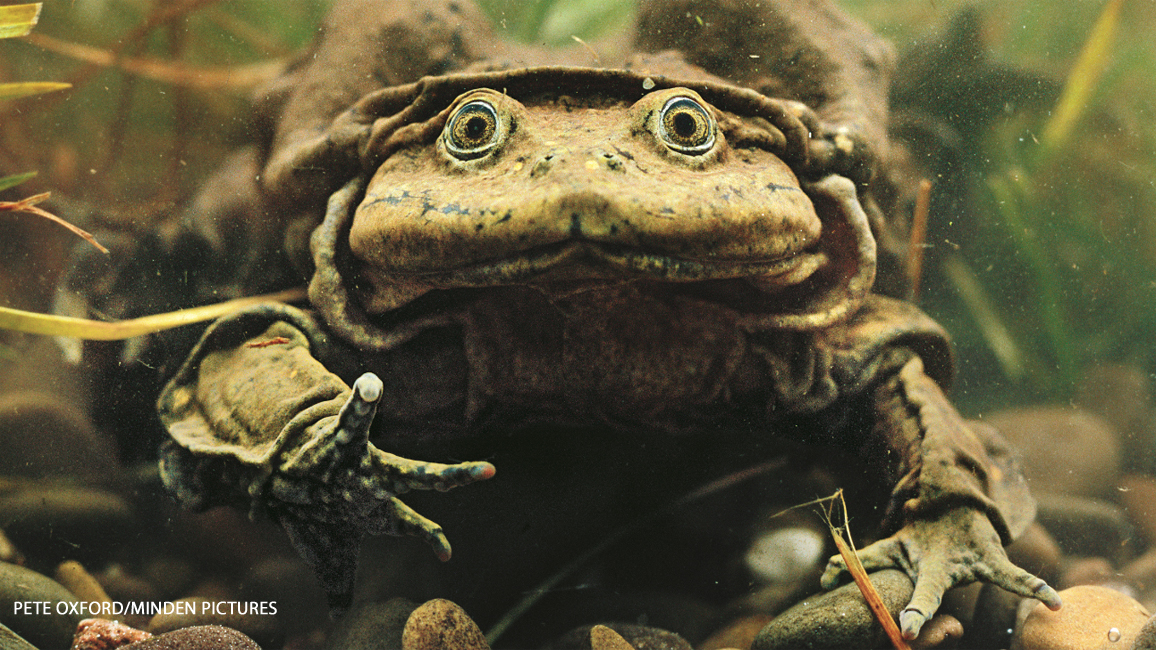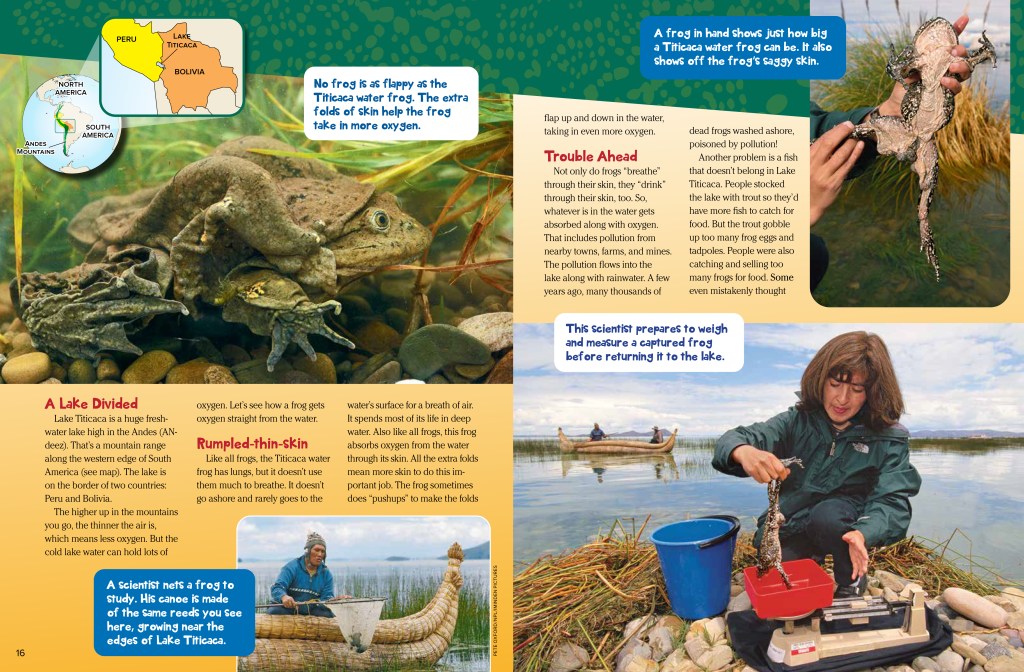
Titicaca Water Frogs
By Ellen Lambeth; photos by Pete Oxford/Minden PicturesJust look at this face! Get ready to meet a frog unlike any frog you’ve ever seen before.

No, that’s not Baby Yoda in the photo at left, ears hidden in the folds of a hooded robe. It’s an actual Earth creature known as the Titicaca water frog. And the frog isn’t wearing a robe—or any other kind of covering. All those leathery-looking folds are actually the frog’s own thin, flappy skin.
The frog spends its whole life in the water. In fact, it’s the largest frog that lives entirely underwater. It gets its name from the only place in the world that it calls home: Lake Titicaca (tih-tee-KAH-kah).

A LAKE DIVIDED
Lake Titicaca is a huge freshwater lake high in the Andes (ANdeez). That’s a mountain range along the western edge of South America (see map). The lake is on the border of two countries: Peru and Bolivia.
The higher up in the mountains you go, the thinner the air is, which means less oxygen. But the cold lake water can hold lots of oxygen. Let’s see how a frog gets oxygen straight from the water.
Rumpled-thin-skin
RUMPLED-THIN-SKIN
Like all frogs, the Titicaca water frog has lungs, but it doesn’t use them much to breathe. It doesn’t go ashore and rarely goes to the water’s surface for a breath of air.
It spends most of its life in deep water. Also like all frogs, this frog absorbs oxygen from the water through its skin. All the extra folds mean more skin to do this important job. The frog sometimes does “pushups” to make the folds flap up and down in the water, taking in even more oxygen.
TROUBLE AHEAD
Not only do frogs “breathe” through their skin, they “drink” through their skin, too. So, whatever is in the water gets absorbed along with oxygen. That includes pollution from nearby towns, farms, and mines. The pollution flows into the lake along with rainwater. A few years ago, many thousands of dead frogs washed ashore, poisoned by pollution!
Another problem is a fish that doesn’t belong in Lake Titicaca. People stocked the lake with trout so they’d have more fish to catch for food. But the trout gobble up too many frog eggs and tadpoles. People were also catching and selling too many frogs for food. Some even mistakenly thought that they could make a health drink by blending frogs into smoothies. Yuck!
There are other problems that could harm Titicaca water frogs. One is a disease that’s been spreading among frogs and other amphibians all over the world. Another is a rapidly changing climate. No wonder the frogs are now an endangered species.

HELP ON THE WAY
Lake Titicaca is a special place for wildlife, including the giant water frogs. That’s why people from Peru, Bolivia, and other countries are working hard to protect it and the animals that live there. Some scientists are studying the frogs in the wild. Others are raising them in captivity to make sure the species survives.
Local people are now learning not to catch and sell frogs. Instead, they use yarn to make and sell toys and handicrafts that help teach others about their famous frogs. Peru even put the frog’s picture on a brand-new coin! Now, THAT has to be worth something, right?
















